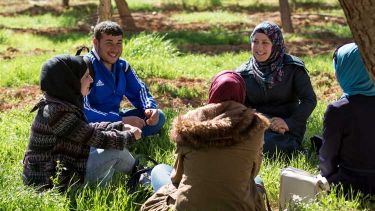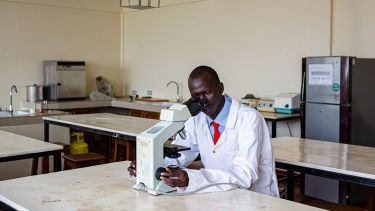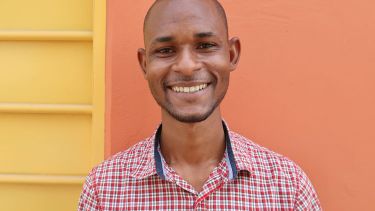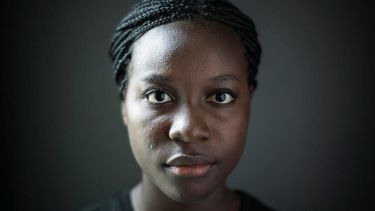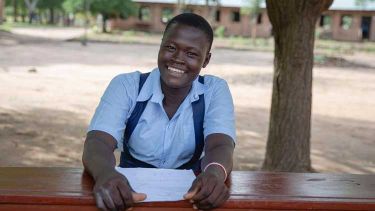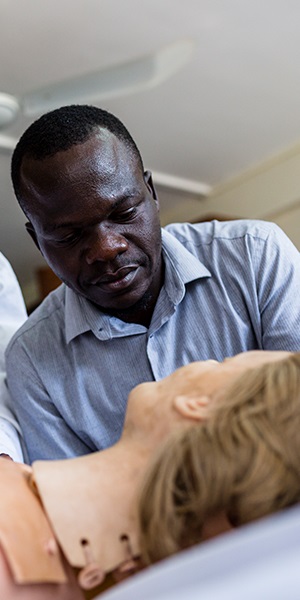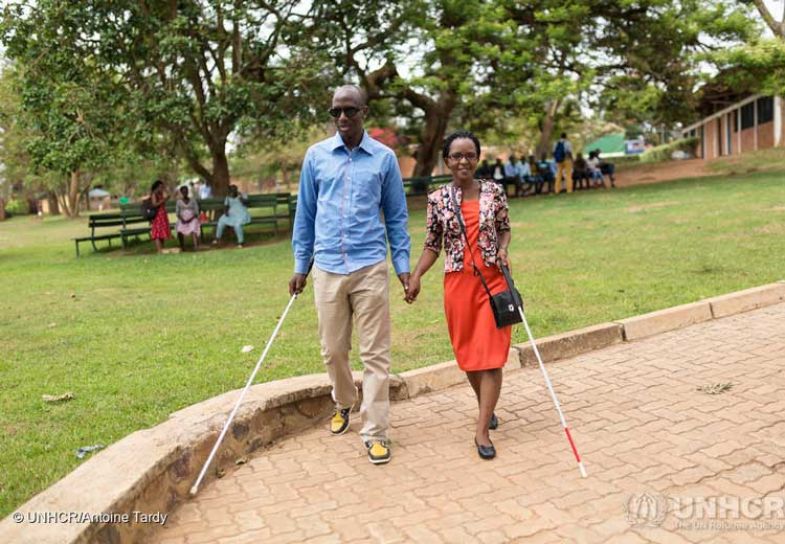
Gloria was eight years old when she lost her vision. Even though she was very young, she remembers what it feels like to be discriminated against as a child in Burundi"When my mother passed away, I stayed with my father and stepmother. But I was strongly discriminated and mistreated in my family,” she says.
Now, Gloria is 25 and studying for a BA in Education, English and Swahili on a scholarship from UNHCR – the UN Refugee Agency. She hopes to graduate this year.
The UNHCR scholarship gives young refugee scholars like Gloria the chance to build a life after displacement, through access to higher education. “Initially I meant to study journalism but had to switch to education and languages due to the lack of means and equipment for persons with visual impairment like myself. There are five of us with visual impairment in my class, out of 84 students. However, the available resources are still quite limited, and it remains a challenge for us to study. We are faced with many obstacles and delays in our education,” says Gloria.
UNHCR scholarships are helping challenge stigma against disabilities and allowing refugee scholars to become self-reliant and active community members in their country of asylum. Since its inception the scholarship programme has supported thousands of refugee students to study at universities and colleges in 50 countries of asylum. The programme in Rwanda opened in 1992.
The benefits of higher education resonate long after students finish their studies. Students are engaged members of their communities during and after they complete their degrees and serve as role models for children and youth who can be inspired to remain in school and succeed academically. Higher education provides students with the opportunity to develop knowledge, experience and leadership skills, which they use to contribute to their host country and countries of origin, should they return home.
Jean-Claude, another Burundian refugee who is now studying in Rwanda says the opportunity has been lifesaving. “When I learned that I got accepted into the scholarship programme, my heart was full of joy. I cannot even describe it,” he says.
Across the world, enrolment in tertiary education stands at 37 per cent among non-refugees. For refugees, despite big improvements in overall numbers thanks to investment in scholarships and other programmes, the percentage remains at only 3 per cent.
Jean Claude returned to Burundi in 2014 but was separated from his family due to political violence. Eventually he returned to Rwanda to be able to pursue his university education. “University life is expensive and challenging. We have to adapt constantly and connect with other people in order to receive support from them. There are still lots of misconceptions and even sometimes fear regarding persons with disabilities. There is still a lot of awareness work to be done,” he says.
But both Jean-Claude and Gloria remain hopeful about the change they can bring to refugees through their education, specifically using their experience with disability. “I think about all our brothers and sisters who have not had to chance to receive education, of those who are still in the camps. We intend to help them and pave the way for them,” says Jean-Claude.
With support for their educations Jean-Claude and Gloria are on their way to supporting the next generation of refugee scholars, proving that disability is no barrier to learning. It is something Gloria actively hopes to change in the future. “One of my dreams, one day, is to create a school for children with disabilities, addressing their needs, nurturing them, supporting them, also teaching the parents on how to love and support them. Often these kids are being rejected by their own families, just like I was,” says Gloria.
If your institution is interested in running a crowdfunder for refugee scholars, get in touch with Paula Holloway at holloway@unhcr.org for more information.

